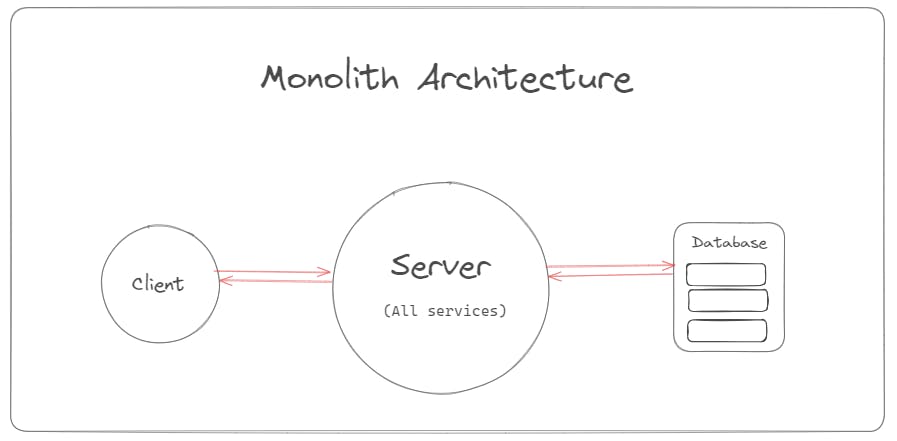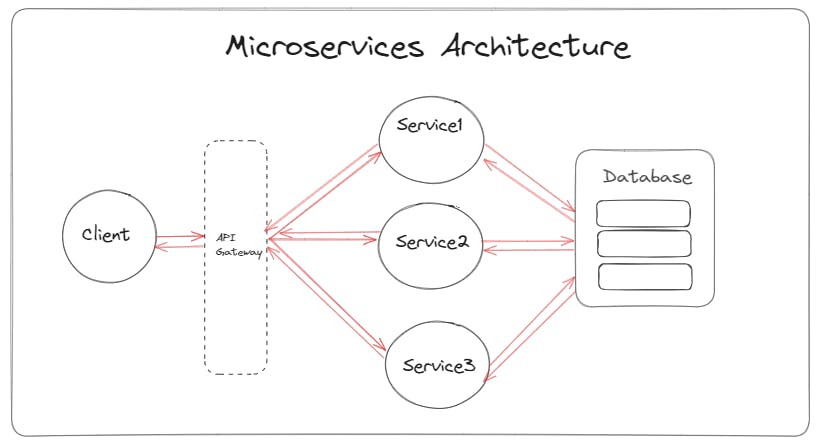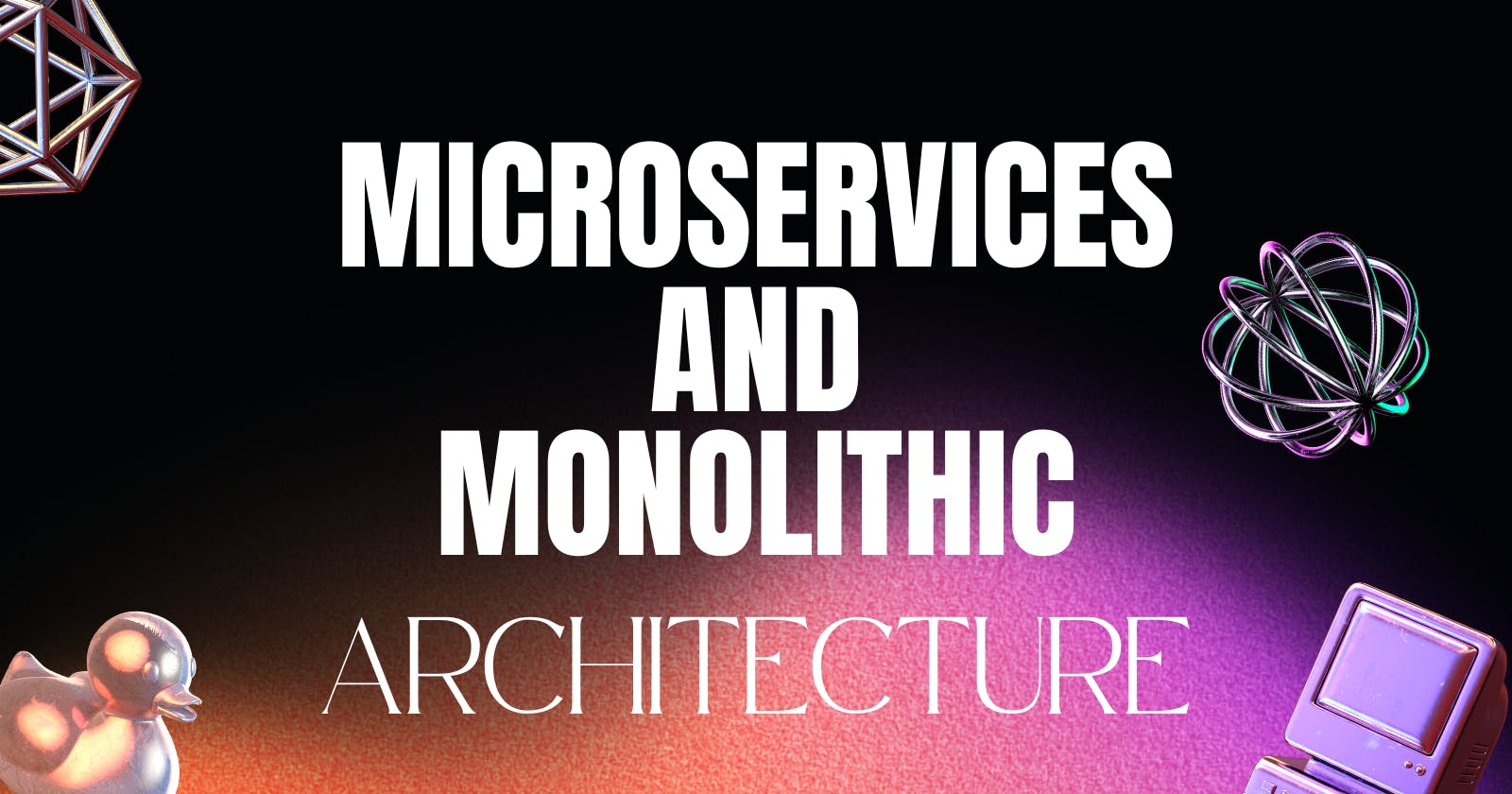The secret to scaling an application to millions of users: Microservices or Monolith architecture
Deciding an architecture for your next large scale project can become an hassle and among the countless number of choices, two prominent contenders stand out: the monolithic architecture and the microservices architecture.
In this blog we'll explore what are these architectures, their strengths, weaknesses and many more.
Monolithic architecture.
Monolithic architecture is the traditional software design approach where an entire application is built as a single, self-contained unit. Here, all the components/services are tightly coupled, meaning all the services depend on each other, and packaged together, running on a single platform (server).
They have a single codebase where all the services are coded and maintained.

Some companies are still using monolithic architecture to handle their services.
Netflix
X (Twitter)
Airbnb
GitHub
Atlassian, and many more...
These companies though started with a monolithic structure and gradually moved to microservices architecture as they grew their customer base and faced several bottlenecks in scalability. However some parts of their codebase still run on the monolithic architecture.
Before discussing the benefits and the shortcomings of the monolith architecture let's understand about The Microservices architecture for a better understanding.
The Microservices Architecture.
It is a software architecture approach structures an application as a loosely coupled, independently deployable services. Each service focus on a specific business capability and communicates with other services through well defined API's. This architectural style contrasts with the monolithic architecture where an entire application is built as a single tightly coupled unit.

The client interacts with an API gateway which directs the request to the designated server for the given request. Now, the server processes the request performs CRUD operation on the database if needed or performs the business logic and sends the response back to the API Gateway, which then directs it back to the origin (browser/client).
Let's understand this with a simple example. Let's take Google Pay for this.
Google Pay is a widely used application with 1000's of transactions every second. So, how do they handle such a scale of users? Google Pay makes use of the full capability of the microservice architecture. Here are some of the independent services.
Payment processing.
This service is responsible for handling payment transaction, including verifying payment details, communication with banks or payment processors and ensuring secure and reliable payment processing. It can also interact with other microservices to orchestrate the entire payment flow.
Notification service.
You may have observed that whenever you do an UPI transaction your transaction happens immediately but you may sometimes receive the message (This much amount has been transferred) immediately or after few minutes. This is because the transaction and notifications are performed in different services. Here, as the transaction is of the utmost importance they are performed immediately in powerful servers. Notifications on the other hand are not that important so they are pushed to a message queue and the workers (servers) pick them up from the queue whenever they are free.
User management service.
This service handles user authentication, authorization, profile management, and preferences. It ensures that the user securely access their accounts and manage their payments.
There are several other microservices as these which overall contributes to the proper functioning of the application.
Now that we understand what both the architecture are on a higher level we can dive deep into the advantages and the disadvantages of using them.
The Monolithic Architecture.
Advantages
Simplicity
Monolithic architectures are simpler to develop, deploy and manage compared to microservices. Since the entire application is contained within a single codebase, developers have a unified environments for coding, testing, and debugging.
Ease of development
Developers can work on different parts of the application without worrying about inter-service communication.
Performance
Monoliths can offer better performance because there is no overhead associated with network communication between services.
Ease of deployment.
Deploying a monolithic architecture is often simpler than deploying a distributed system with multiple services. It usually involves deploying a single unit, reducing deployment complexities.
Scalability
Applications using monolithic architecture are generally scaled horizontally, i.e., by increasing the number of application servers which is easy to perform but has some problem which we'll discuss in the coming sections.
Disadvantages
Lack of flexibility
Making changes to one part of the application may require redeployment of the entire monolith, leading to longer deployment cycles and potential downtime.
Scalability challenges
Scaling the entire monolith horizontally may not be efficient and cost effective. Usually services that are on demand at the time are only scaled horizontally and this is not possible in the monolithic architecture. We can only scale the entire application which is not cost effective as resources that are not needed are also scaled.
Limited technology stack
All parts of the application use the same technology stack. This can limit the ability use different technologies which may be better suited for specific tasks or functionalities.
Complexity as the Application Grows:
As the application grows larger and more complex, maintaining and understanding the codebase can become challenging. It may be harder to onboard new developers or make changes without introducing unintended side effects.
Dependency Risks:
Changes or updates within a monolithic application can introduce dependencies and potential risks. A change in one part of the codebase may impact other parts, leading to unintended consequences or bugs.
The Microservices Architecture.
Advantages
Scalability
They excel in scalability as they allow individual services to scale independently based on demand. This enables efficient resource utilization and cost optimization.
Flexibility and Agility
They provide flexibility and agility by enabling teams to work on smaller, decoupled services independently. This facilitates faster development cycles, easier updates, and the ability to adopt different frameworks for specific services.
Fault isolation
Failures or issues in one service typically do not affect other services. This reduces the impact of failures on the overall application.
Technology Diversity:
They allow for using different technologies, languages, and frameworks for individual services based on their specific requirements. This improves overall system efficiency and performance.
Disadvantages
It is extremely complex. That's it.
Just kidding😄. Let's explore the different complexities involved in using the microservices architecture.
Complexity
They introduce some complexities like
Managing inter-service communication
Maintaining distributed systems
Handling data consistency across services, and many more...
These complexities can increase development and operational overhead.
Operational overhead
Operating and managing a distributed system of microservices requires additional infrastructure, monitoring, and management tools. This can lead to increased operational overhead and complexity in deployment, monitoring and troubleshooting.
Inter-service communication overhead
Microservices need to communicate with each other for a proper functioning of the application. This can impact the performance and latency.
Data management challenges
Handling data consistency, transactions, and synchronization across multiple services can be challenging. Maintaining data integrity and availability across multiple services requires careful design and implementation.
To sum up, Deciding between monolithic and microservices architectures for large-scale projects involves weighing simplicity and performance against scalability and flexibility. Monolithic architectures offer simplicity and ease of deployment, while microservices excel in scalability and fault isolation. However, microservices introduce complexities in inter-service communication and data management. Both architectures have their advantages and disadvantages, making the choice dependent on specific project requirements and goals.

